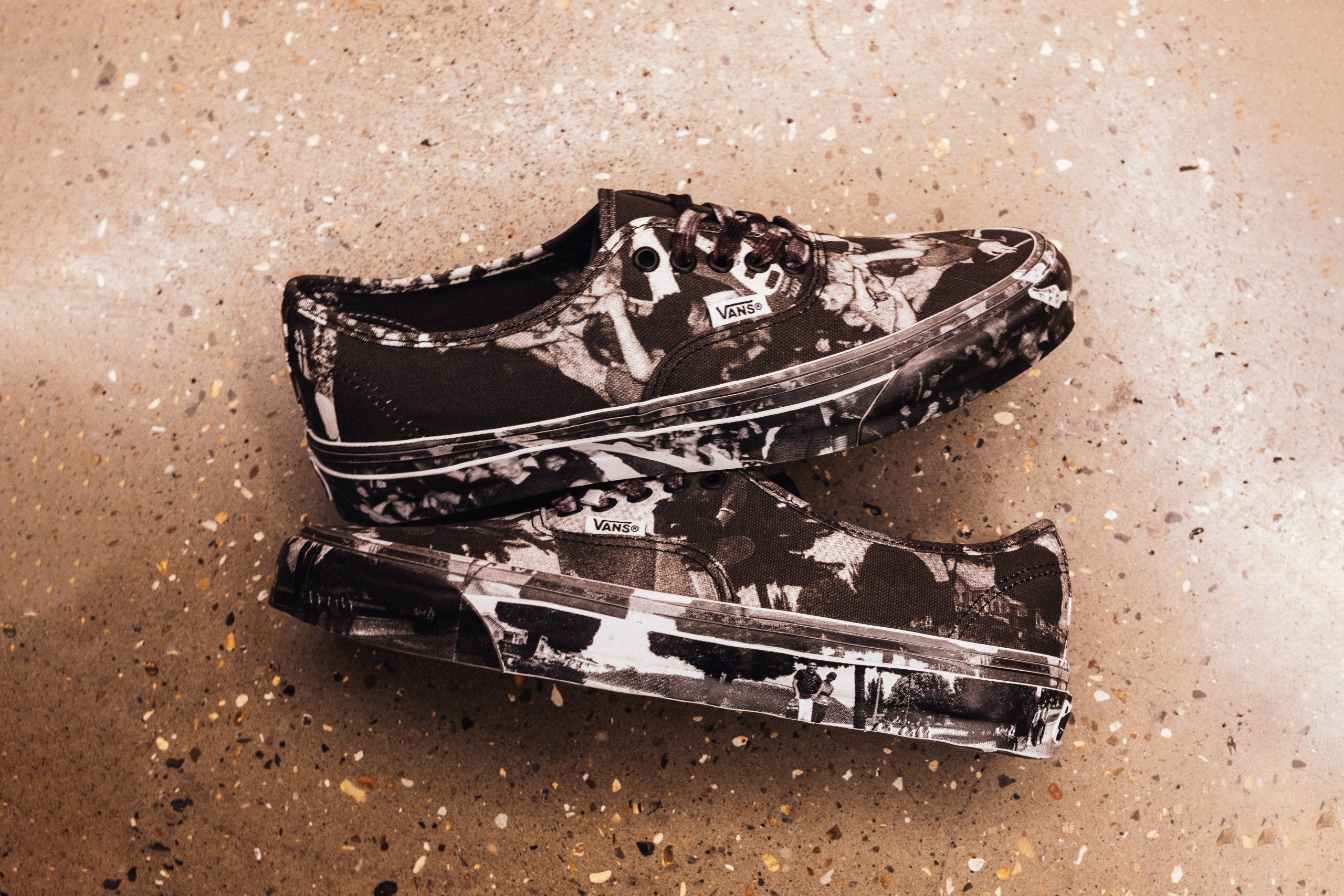Atiba Jefferson isn’t just a skate photographer — he’s the guy behind some of the most legendary shots in skate history. But his lens goes way beyond the park. From music and hoops to art and film, Atiba’s shot everyone who’s anyone — stacking up hundreds of magazine covers and a wild roster of friends along the way. We’re talking movie stars, rockstars, comedians, basketball icons, and of course, the best skaters on the planet.
The ‘United Through Skateboarding’ Collection is all about that — celebrating Atiba’s work and the community that shaped it. The drop features custom takes on his go-to Vans silhouettes, featuring block colours, photo prints and graphics by his longtime friend and graffiti legend Haze.
BSMNT:
Alright, first off, number one, thank you for joining us. You’re a legendary photographer at this point, bro. You’ve got a body of work that speaks volumes. If you’re ready, we can start the interview.
What was it that made you want to capture skate culture to start?
AJ:
I mean, I was a skater. I started skating in 1989. Skating was the first obsession for me besides video games and music. It’s a long story—there are multiple reasons why I got into photography—but it kind of felt like a calling for me.
I was really into Spider-Man as a kid, so Peter Parker was always really cool. Looking at magazines—I always say it’s the blueprint of photography—I was tearing out pages and posting them on my wall. Spike Jonze, Dan Sturt, and Grant Brittain… I didn’t know I was actually studying what I would become. I had a subscription to Thrasher as a kid.
I got in a fight with my brother—who’s coming here—and I was a graffiti kid, really into drawing and art. I broke my hand and had to take an art elective in high school, so I took photography. My friend Josh Wildman was also a photographer who I really loved.
When I went to the darkroom and saw a print being made, that changed everything. The magic of seeing that happen, and seeing the mistakes I made in the photo—it was kind of like skateboarding, right? Learning how to kickflip. It was like, this is what I want to do. Not as a living, but this is what I want to learn. Same thing with skateboarding.
As soon as that happened, I always say I wasn’t a good skater, so my way to hang out with skaters was to take photos. This was before social media, before everyone filmed everything.
BSMNT:
Yeah, I mean, I skated when I was younger—loved the culture. I wasn’t a great skater, but what was it about skateboarding and the culture surrounding it that drew you in?
AJ:
I talk about that all the time—it’s the inclusiveness. As a person of colour and not an athlete who was gifted, and growing up super poor, skateboarding doesn’t discriminate. It’s not perfect, but it never discriminated against me.
Now it’s even better—gender, women skating, trans skaters—it’s great to see everybody embracing everything. But back then, it was a safe space. I could be a punk rocker, I could listen to hip hop, I could be a graffiti kid, and no one looked down on me.
I was also a straight-edge kid growing up, so I didn’t even drink until 21. Skating just embraces everybody. The culture and the community are great.
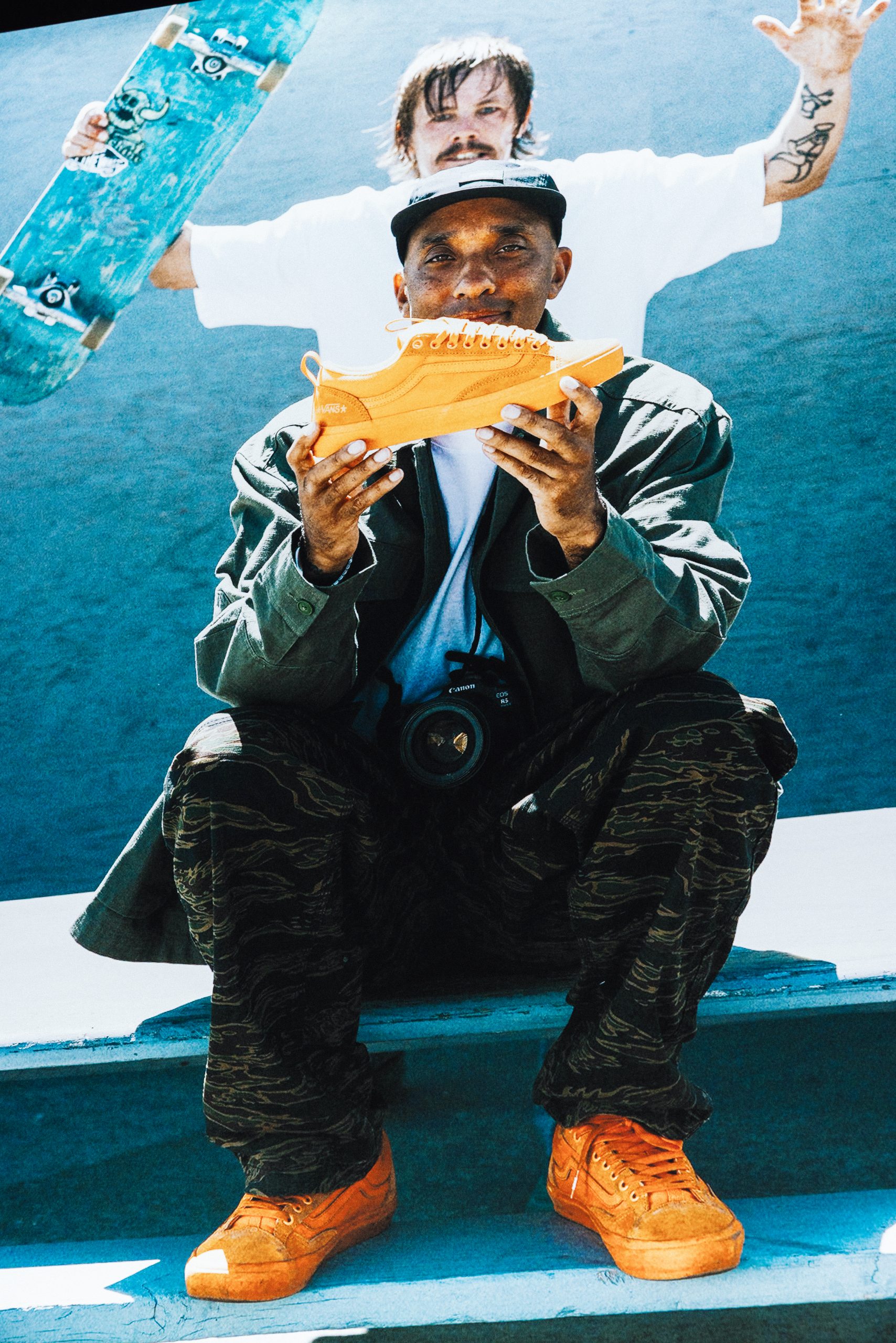
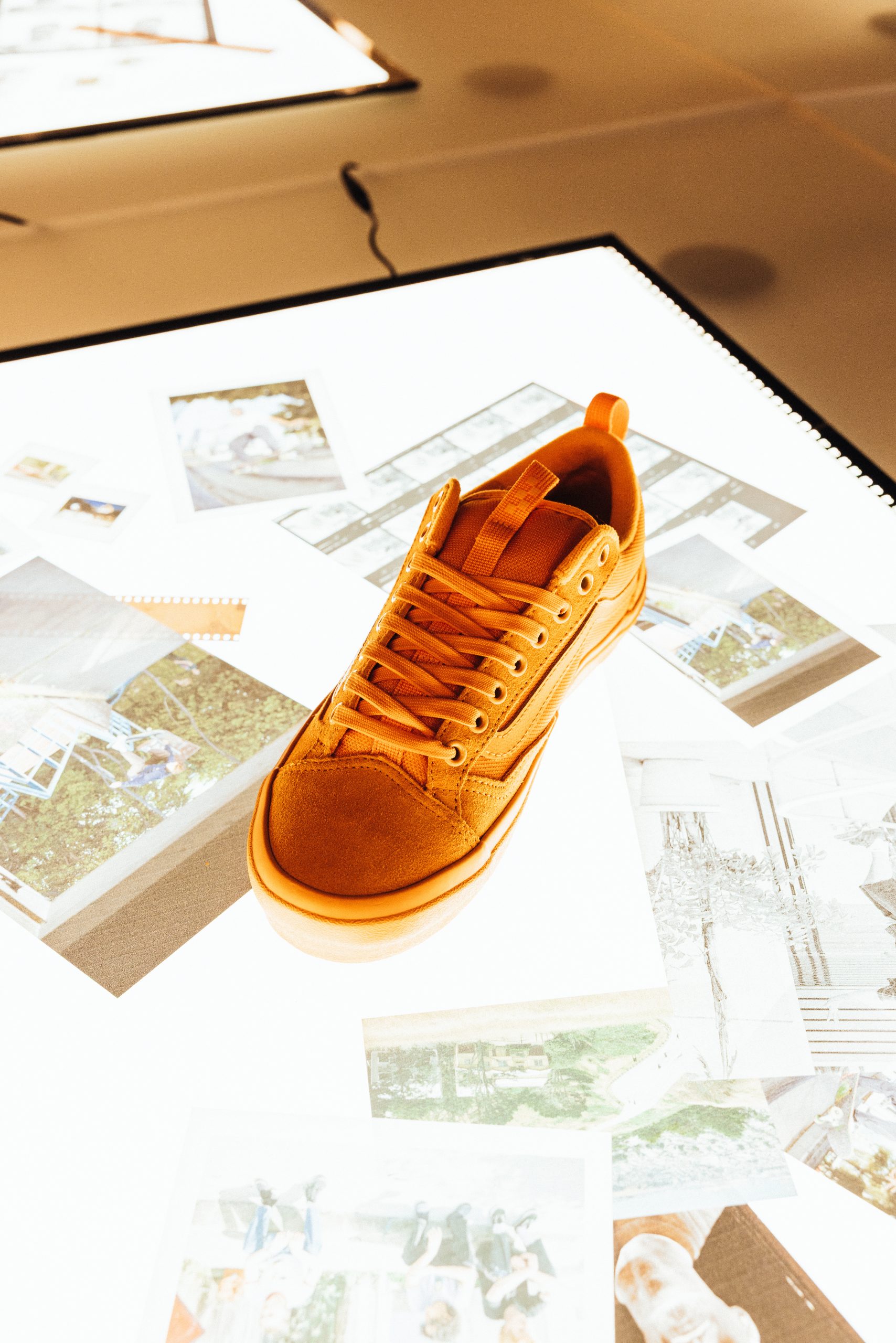
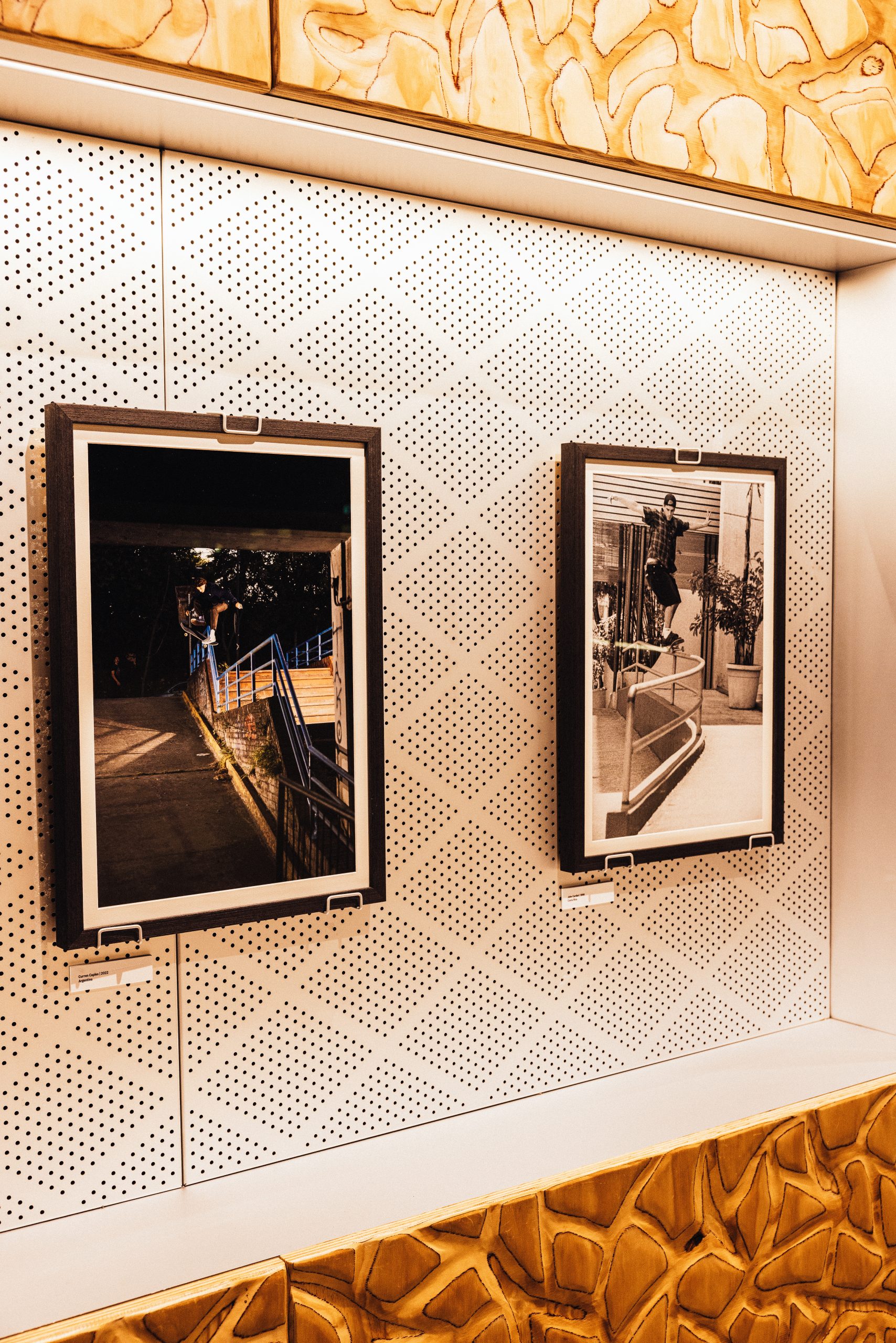
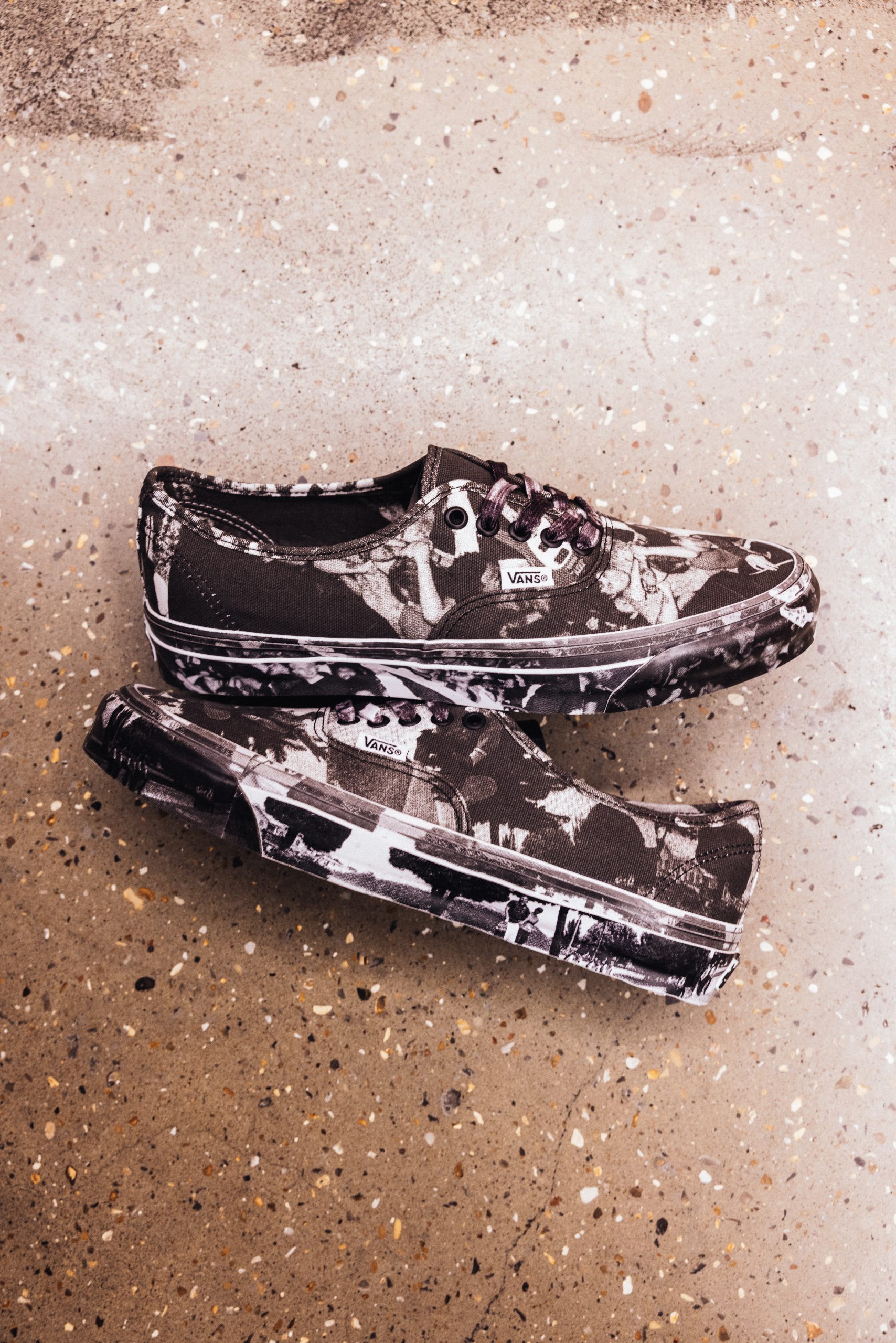
BSMNT:
You started off capturing skateboarding, but you’ve now worked creatively across multiple subcultures. You’ve shot basketball, hip hop, punk rock… What do you feel all of those subcultures share?
AJ:
It’s kind of cheesy, but they’re all united through skateboarding to me. All those cultures are connected. Sports isn’t necessarily the same, but I’m glad to connect sports to skateboarding—everyone loves sports to some degree, right?
All of it, to me, is like photography and skateboarding—it’s about learning, repetition, failure, and success. Skateboarding is years and hours of falling and getting back up. Anything I do is in that world.
I’m not into shooting models—I want to know people who have tried, failed, tried again, failed again. That’s a cool thing.
BSMNT:
Working across all of those different sports and subcultures—how has that impacted or evolved your craft?
AJ:
They all complement each other. I don’t think I’d be as successful as a skateboard photographer if I didn’t take what I learned from basketball and bring it into skateboarding—and what I learned from skateboarding, I brought into basketball.
BSMNT:
Out of interest, what did you learn from basketball?
AJ:
Oh, so much. I learned high-speed flashing—for all the nerds out there—and medium format work. I learned how to storytell from the photographer I assisted.
With skateboarding, this is why my archive isn’t that good. With film, we worried about getting the trick, and you wouldn’t waste a frame on shooting a portrait. With basketball, I remember sitting next to Andy and a crazy dunk from Kobe happened. Right away, he brought up another camera and shot the bench. I asked, “Andy, why did you do that?” and he said, “The celebration is just as important as the dunk.”
That’s when I realised—you have to storytell. Luckily with digital, you can shoot as much as you want, but film costs a lot—two dollars a frame.
BSMNT:
I’ve shot film back in the day, and I still shoot film now. It’s scary how expensive it is, especially if it’s not a commercial job and you’re doing it out of love.
AJ:
Exactly. That’s why I really embrace digital. I still embrace digital, and I’m an ambassador for Canon, which is probably my highest level of success, honestly. I haven’t really talked about it in media, but being able to work with them is huge.
I still shoot film all the time, though. People don’t even know when I shoot film. I did a whole Thrasher article with Supreme in Miami—all film. No one noticed. Lack of respect! (Just kidding.)
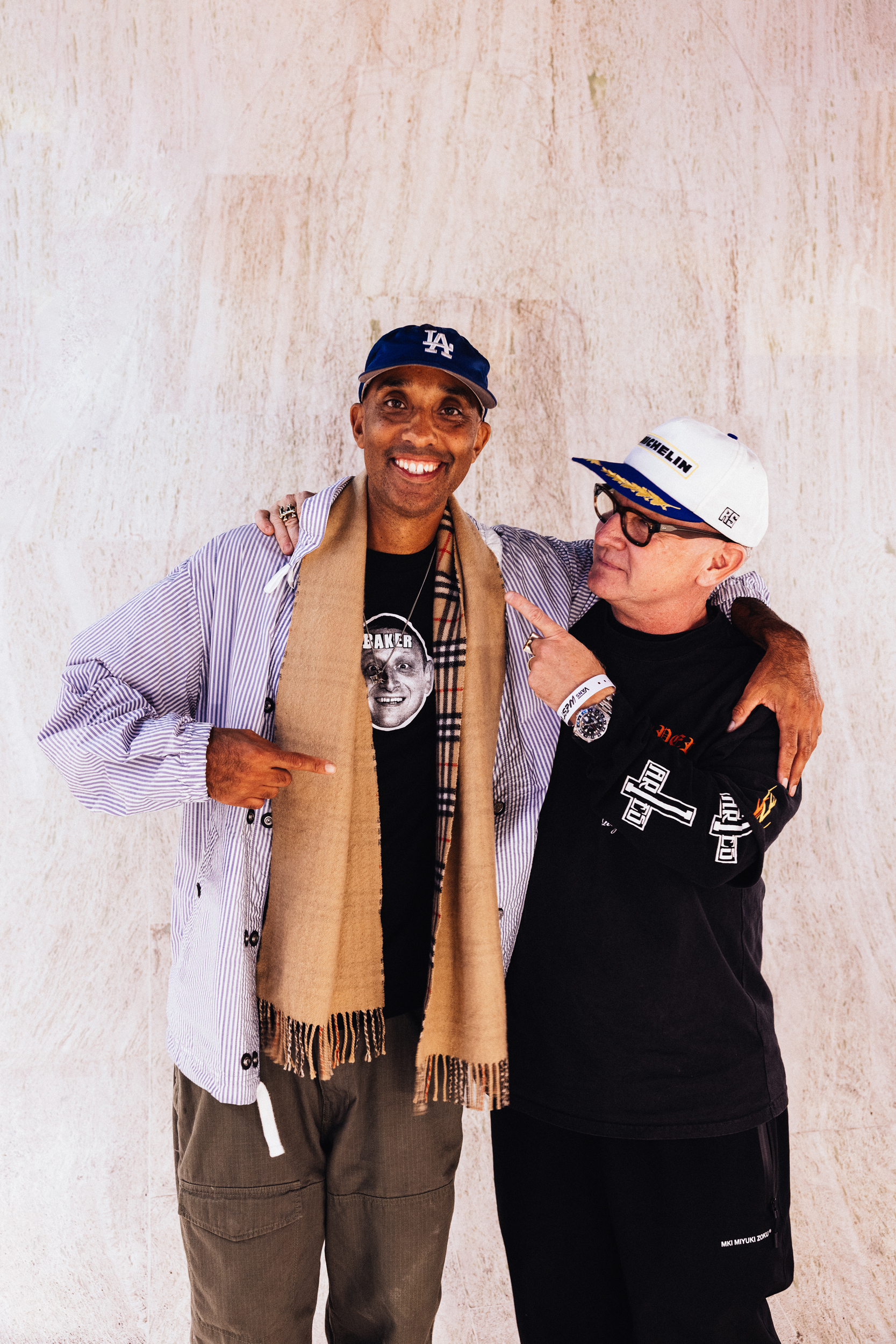
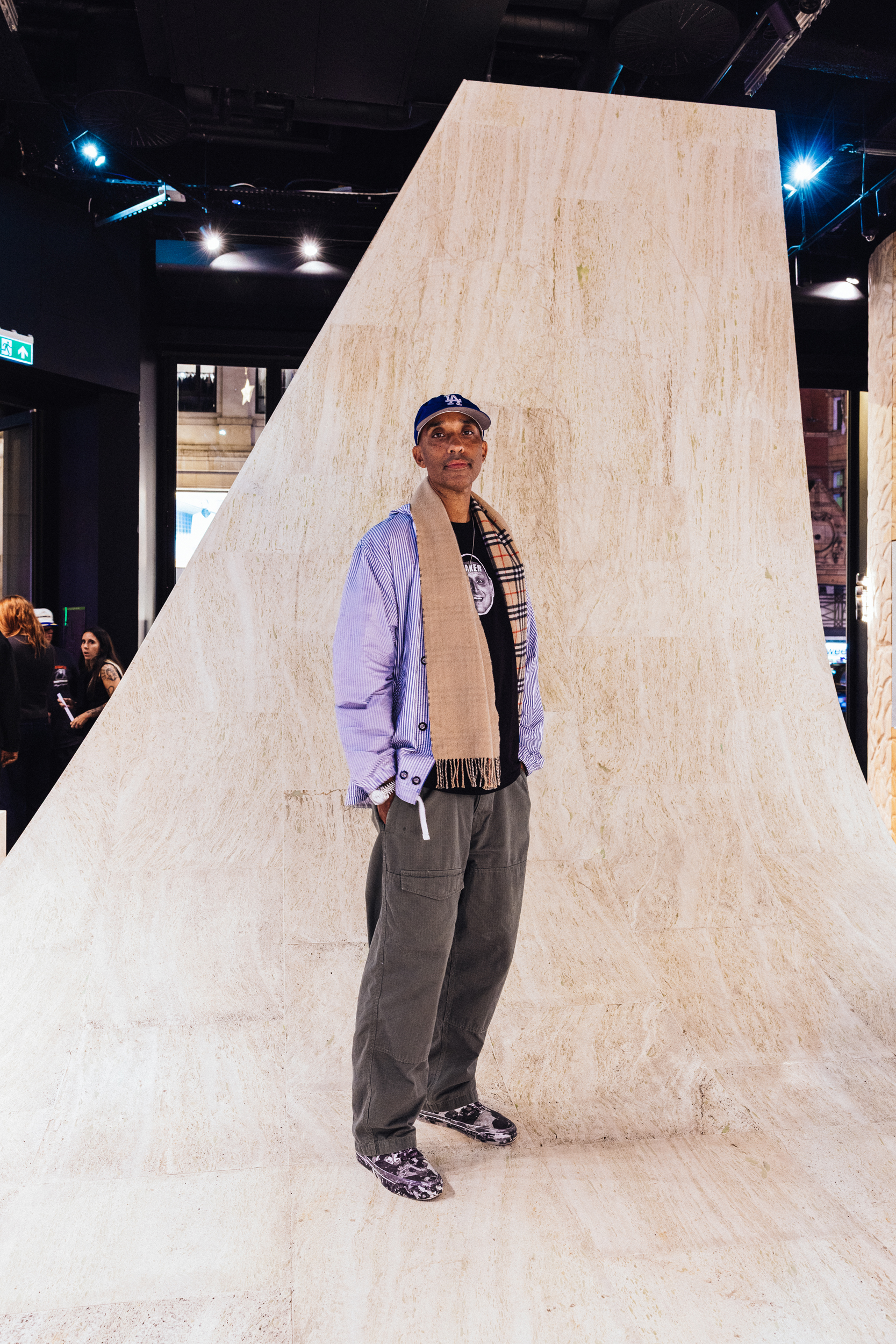
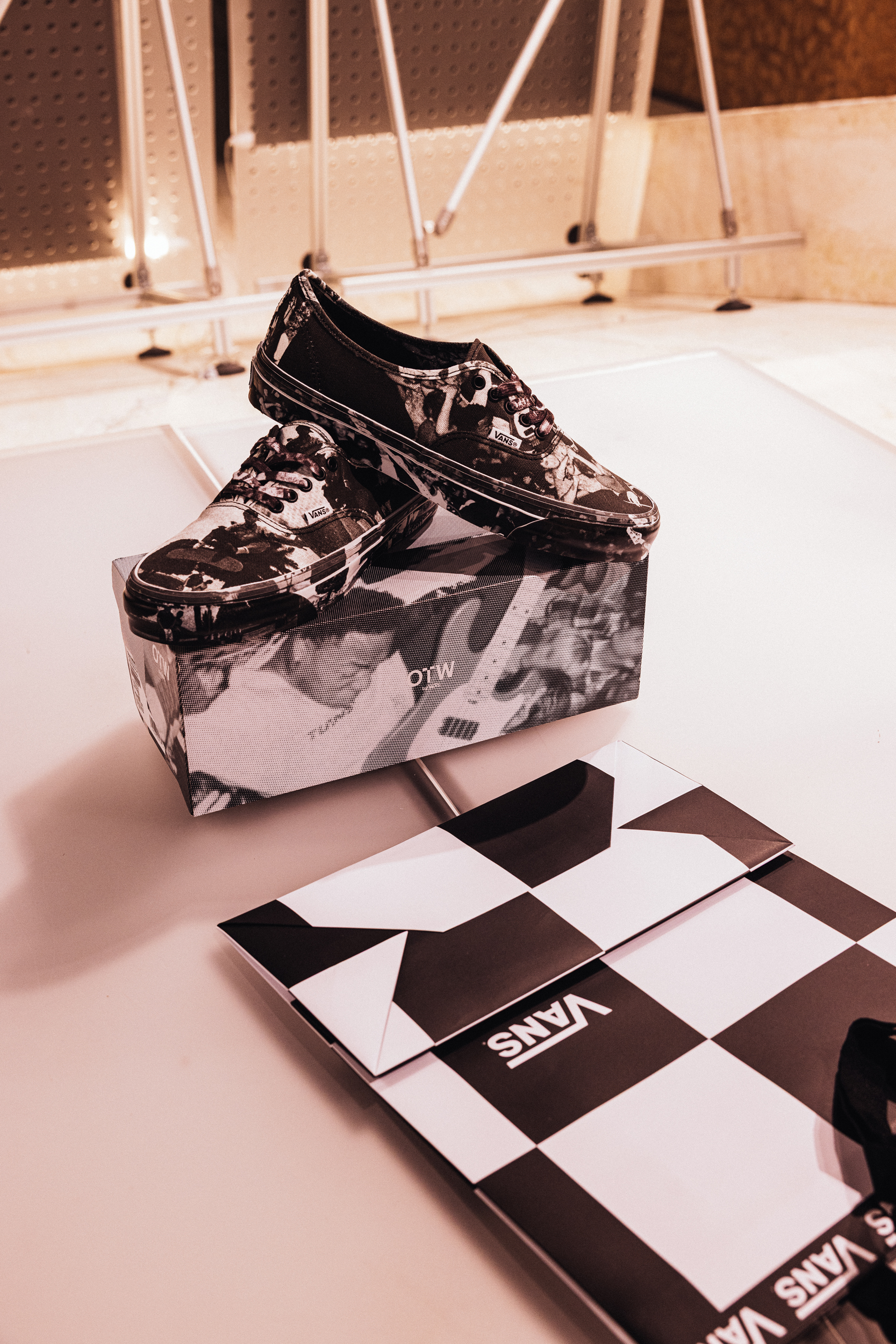
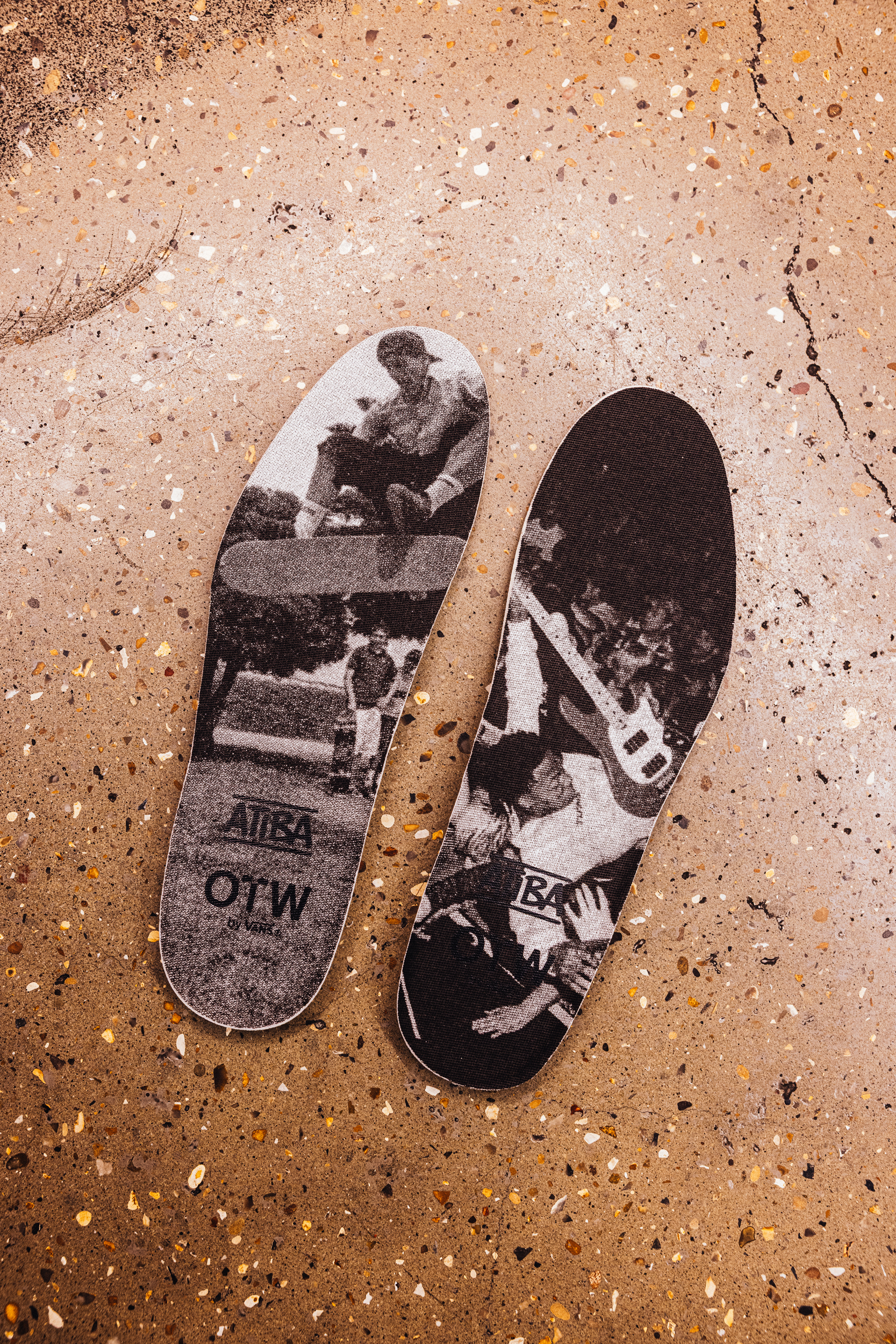
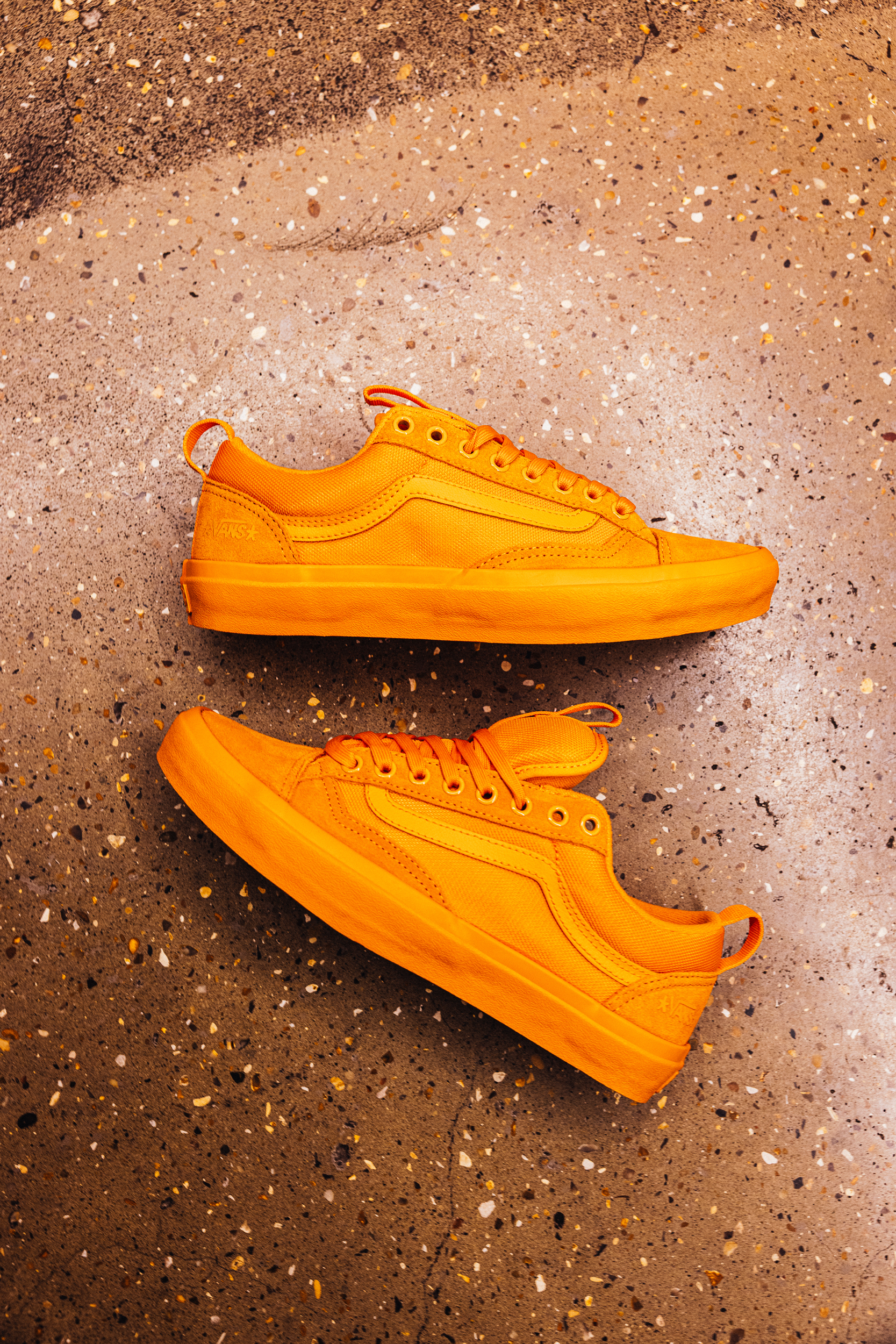
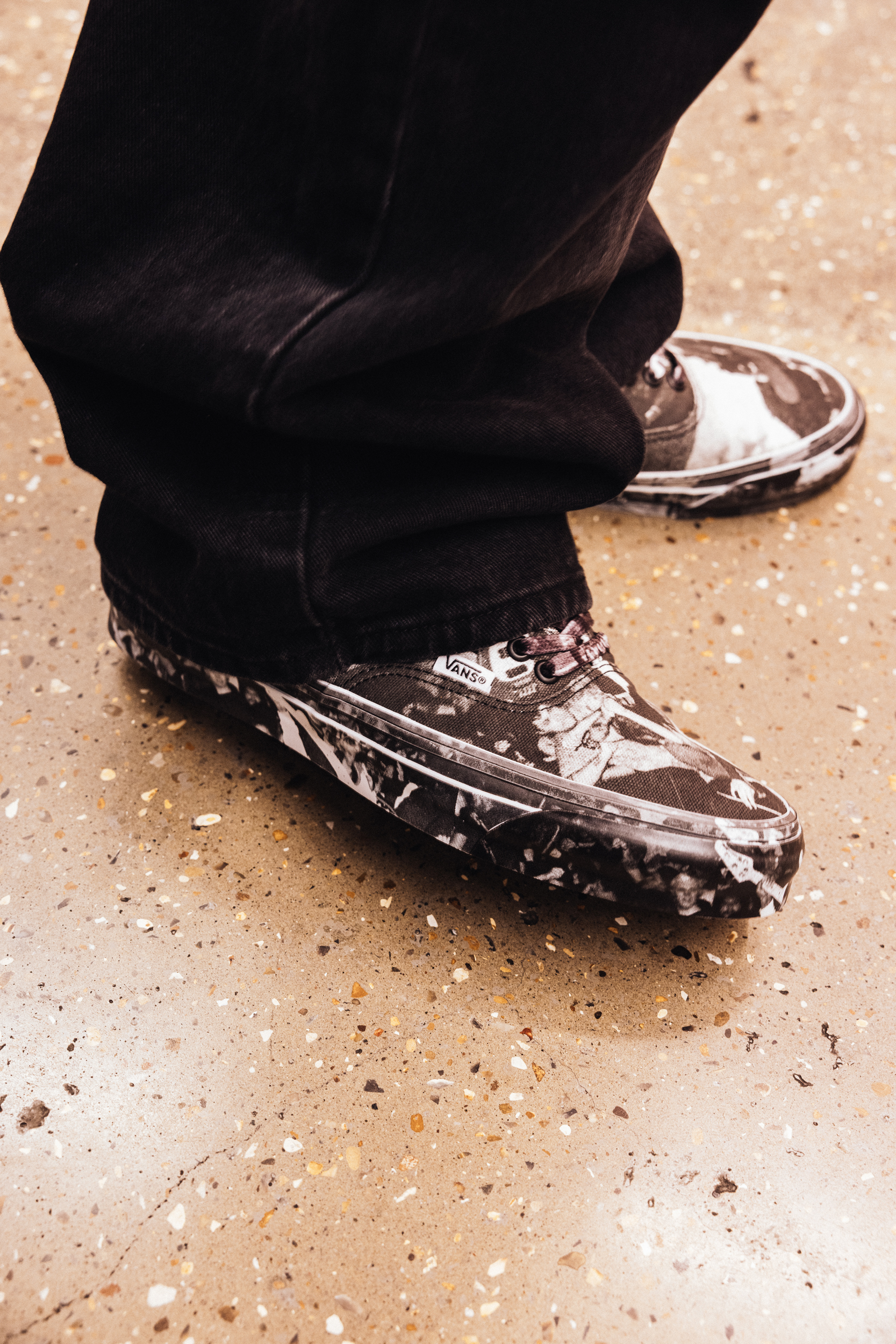
BSMNT:
This photo show brings together a lot of your body of work—it’s extensive. It’s obviously not the full thing, but it’s all Vans, right? When you zoom out and look at what you’ve shot and accomplished over the years, what do you feel are the main takeaways when you reflect on it?
AJ:
That’s a good question. I’d say my main takeaway is that my body of work is diverse. Photography is something you can get tunnel vision with, and that’s a beautiful thing. Sometimes I wish I was more focused on one type of photography because I’d be better at it, but I’m also very proud that my body of work is so vast.
I see photos everywhere I look, and I love that. If I was just a skateboard photographer, I’d probably be better. If I was just a basketball photographer, I’d be better. As a portrait photographer, same thing. But I love that it’s all over the place—I’m very, very proud of that.
BSMNT:
You’ve shot some iconic images.
AJ:
I don’t think so.
BSMNT:
You don’t think so?
AJ:
No. Maybe four good photos.
BSMNT:
Out of the millions—that’s kind of the nature of photography though, right?
AJ:
Yeah, there are photographers who’ve shot a ton and I’m like, damn. But for me—it’s Tyshawn’s kickflip over the train track, Reynolds’ front flip, Frans’ backflip into the crowd, the LA Clippers slam with all of them.
BSMNT:
It feels like you’ve made a cultural impact, which is crazy.
AJ:
I don’t think so. I’m not that. But to an outsider, maybe. The biggest thing I’m proud of is inspiring other photographers—especially women, people of color, everyone different. That’s what I’m most proud of.
I don’t think I’m that good, and I’m not fishing for compliments, but it gives me anxiety. I’m not that guy. If you notice, I didn’t even sign the thing. I didn’t want a single photo of myself. I keep myself out of it. Don’t get me wrong—I’m a ham—but I feel so lucky.
BSMNT:
What would you say to a young person trying to get into photography?
AJ:
My biggest thing—I remember a friend who’s a photographer saying, “I want to make money off photography.” That was never my motivation. He did it though, he’s very successful. But he went into it wanting to make money.
BSMNT:
Moving on to this collection—you’ve transitioned from image-making into product-making, which wasn’t on my bingo card. How has image-making affected your product design?
AJ:
That’s a great question. My process is about studying what people look like. Don’t get me wrong—when they approached me with this, I wasn’t trying to be… (laughs) I love this song so much.
I wasn’t trying to do this. All the collections I make are just clothes that I would wear. I don’t make clothes to sell, I don’t pick colors to be a hot seller. But I do see things as a skate photographer and as a photographer—you know how it is, you see what looks good on people.
Virgil Abloh—I gotta always give him his flowers. He’s a big inspiration. If you look at the collection, I’m obviously heavily influenced by him.
BSMNT:
And last one—“United Through Skateboarding” sounds rooted in community. What does community mean to you through this collaboration?
AJ:
If I’m going to have one opportunity to do a collaboration and to do something, I want it to be about my network of friends. I’m very proud and feel very lucky to have a diverse and different type of community—sports, music, comedy, skateboarding. It’s all what I’m about. It’s my DNA.
I feel very lucky to bring them in. I feel very lucky that all my friends—some people know them, some don’t. Like Baron Davis, the basketball player—he’s on Dancing with the Stars, one of the greatest players ever. No one knows! (laughs) Make sure you don’t put that in there.
There’s Tim Robinson, Sam Richardson, the Workaholics dudes, Franz from Turnstile. It’s crazy. I have a great group of friends—very, very proud of that.
